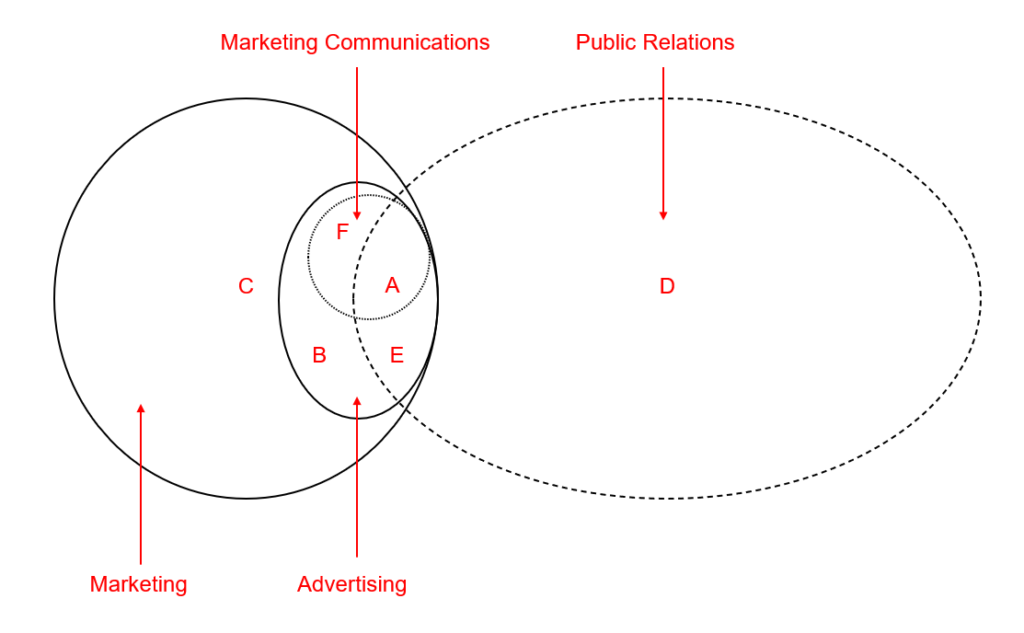PR and Marketing: A 2020 Model (2)
If, as is shown in this diagram, PR enclosed all communications and marketing activities, then it acquires commercial significance at a stroke. A logical case for this is also apparent: since all marketing activities concern publics, then Public Relations is the natural sphere in which those activities should be managed. For this to be refuted, marketing would be forced to make the bizarre assertion that its activities do not concern publics! Seen this way, only a small portion of the PR activities are indirectly commercial.
To me, the following configuration is an obvious solution to the problem of ascertaining the role of PR in revenue generation:

A: corporate advertising (promotion of the brand, not a specific product)
B: direct marketing and sales promotions (e.g. e-mail and freebies, respectively)
C: distribution, pricing, and product development
D: corporate PR (internal communications and public affairs)
E: marketing PR (publicity and sponsorship, i.e. traditional public awareness activities)
F: mass media advertising (traditional advertising)
In Cornelissen’s model, PR (the D oval) is involved in brand promotions (A) and mass media advertising (F). The lion’s share of its work is therefore only indirectly commercial. Public affairs can reap commercial gains: if the brand interacts positively with its publics, consumers are more likely to engage with its products or services – is the assumption. But internal communication has very limited input into revenue generation. It could be argued that effective internal communications creates internal efficiencies within the organisation that ultimately translate into value for the customer via improved products or services, but measuring this effect must be challenging.

Are any of these models and distinctions meaningful in terms of a company’s performance, however? Are companies’ communications structures a significant determiner of profits? Unlikely. However, and this much is is certain, the pressure for companies to demonstrate transparency in all their operations and interact with the public in a democratic manner has never been greater. Hence the contextual/social case for elevating or expanding the remit and power of PR is gaining momentum.
